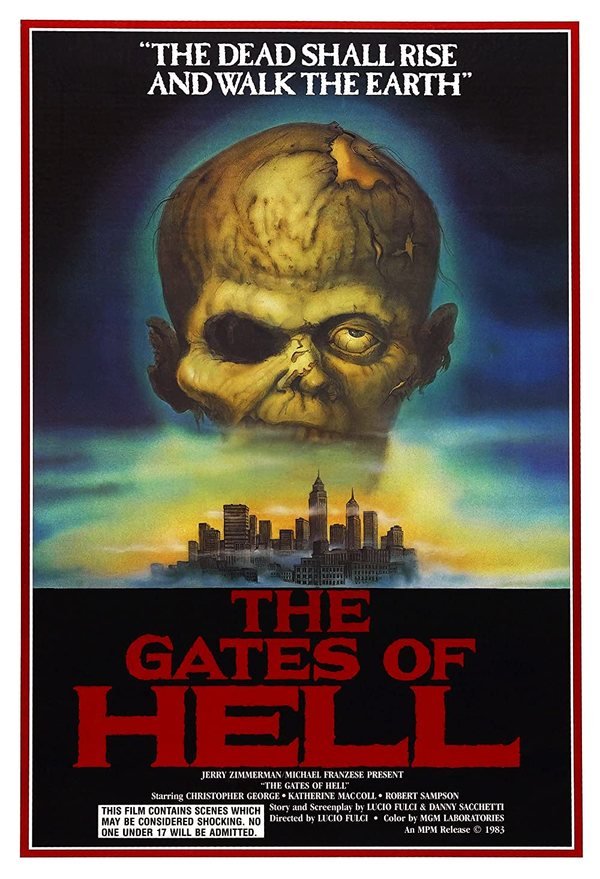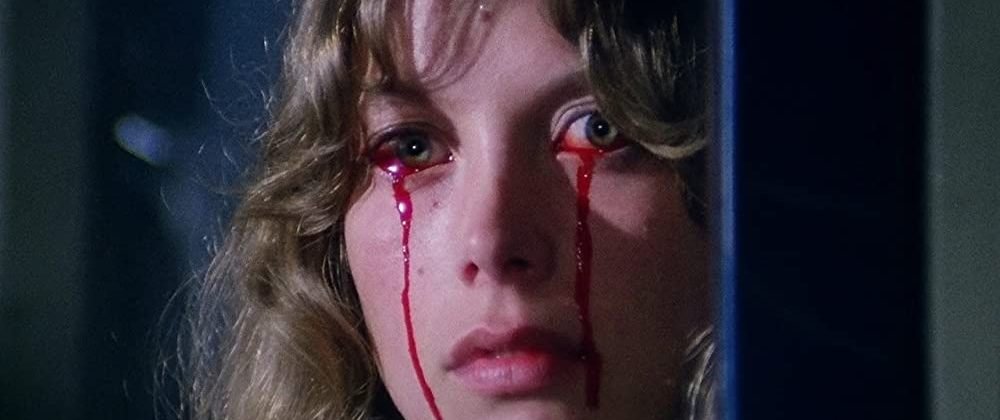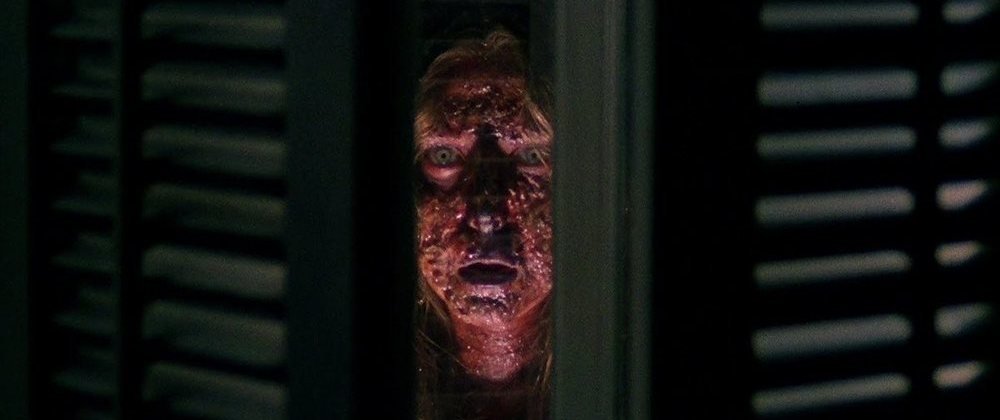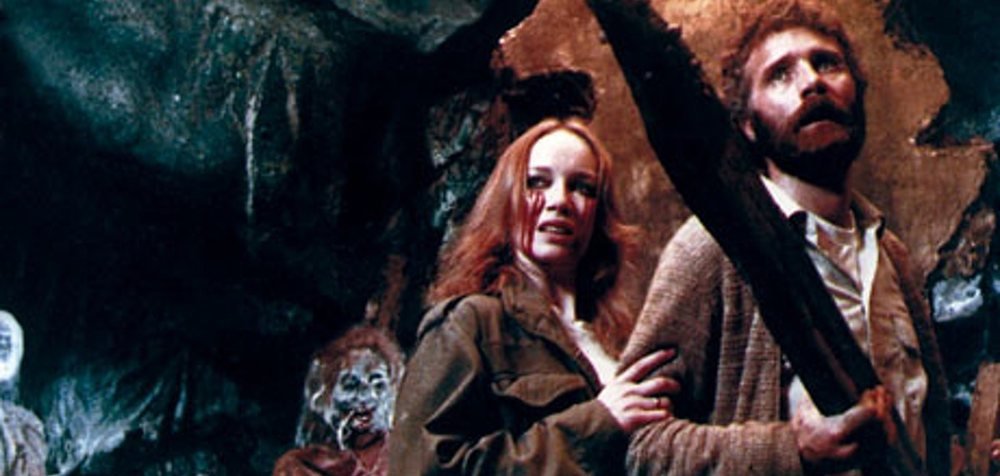CITY OF THE LIVING DEAD: Gothic Tendencies, Gonzo Weirdness And Gore Galore
Despite scoring a big, career-saving hit in 1979 with Zombie, it would take a little while for Lucio Fulci to assume the mantle of horror maestro: indeed, his next few projects would include a t.v. serial and a splattery but supernatural-free gangster opus. However, Fulci and Zombie writer Dardano Sacchetti had another supernatural project prepared that would go before the cameras in 1980. The result took the living dead element of Zombie into surreal, Lovecraftian territory, forming the bedrock of what would eventually be known as Fulci's "Gates Of Hell" trilogy (note: The Gates Of Hell would be the U.S. release title for this film in 1983).
CityOf The Living Dead has an initially diffuse, novelistic narrative built on a series of subplots that gradually merge as the narrative moves forward. The first deals with Mary (Catriona MacColl), a medium who sees a vision of a small town priest hanging himself in a cemetery. She seems to dieas a result and is only rescued from premature burial by Peter (Christopher George), a reporter who subsequently takes her to find the small town in her vision. Meanwhile, strange things are afoot in Dunwich, the town from Mary's vision: people are mysteriously disappearing and suspicion is cast on town misfit/perv Bob (Giovanni Lombardo Radice).
However, Dunwich therapist Gerry (Carlo De Mejo) and his patient Sandra (Janet Agren) witness strange events that suggest something otherworldly is happening, particularly when Gerry's assistant Emily (Antonella Interlenghi) dies under strange circumstances and her little brother John-John (Luca Venantini) claims to see her undead corpse stalking him. What they don't know is the now-undead priest is killing townspeople, adding them to an army of undead specters - and Mary's vision suggests if they fail to stop him, he'll be able to open the gates of hell permanently and allow the dead to walk the earth.
The resulting film is a singular blend of narrative eccentricity, thick-as-fog atmosphere and jaw-dropping gory shocks. That combo threw many a young horror fan for a loop in the '80s, some dismissing it as a disjointed campfest because it has a typically odd Italian depiction of American small town life (shades of Cannibal Apocalypse) and is content to break rules of character behavior and plotting right to the very end, including an infamous final shot that remains a source of debate amongst Italian horror fans.
However, another interpretation is that Fulci and Sacchetti have created their own malevolent dream-world here, one subject to sudden, dreamlike bursts of strangeness and cruelty based on the whims of its creators. If viewed through that lens, City Of The Living Dead plays like a dry run for this "dream-world" approach, something Fulci would perfect in The Beyond and House By The Cemetery.
Sacchetti's script couldn't care less about plausibility in character behavior or narrative logic but complaining about those thingsseems beside the point. What matter here is the way his script uses its inherent weirdness to establish the mood of a dream whose recognizable elements curdle into something strange and hostile that refuses to make sense or play by conventional rules. The script plays better if seen as a series of loosely connected setpieces that put the story's handful of likeable protagonists through the ringer, pulling the rug of narrative safety out from under themagain and again.
The barrage of setpieces supplied by Sacchetti are vividly brought to life by Fulci, who clearly relishes using them as a pretext to his own personal theater of cruelty here. With the help of two reliable collaborators - cinematographer Sergio Salvati and editor Vincenzo Tomassi -Fulci assembles a string of sequences that keep topping themselves with senses-defying surrealism and brutality: highlights include a tense sequence where Mary's early grave is pried open with a pickaxe, a spectacular gross-out where the undead priest induces a young woman to vomit up her intestinal tract in front of her horrified boyfriend, another vicious shock where a drill is slowly shoved through a victim's head and the squirm-inducing surrealism of a sudden, malevolent wind that bursts through a window to shower the heroes with thousands of wriggling maggots. The sinister yet stylized mood is completed by an excellent prog-rock score by Fabio Frizzi that sounds like David Gilmour sitting in on a Goblin recording session.
It's also worth noting that the cast is packed with faces that will delight Italian horror film fans. MacColl makes her first appearance in a series of three lead roles for Fulci (in an interesting bit of symmetry, all three were in his Gates Of Hell trilogy). She lends a sense of class and acting chops that play a role in selling the film's strange world. George lends an interesting presence to the film: his grinning, irreverent and distinctly American style makes an interesting contrast to his Italian castmates. Both aforementioned actors provide a relatable anchor that keeps the audience from drowning in the film's dreamlike vibe. Elsewhere, De Mejo and Agren, both Italian horror regulars, make solid b-plot protagonists, Venantino Venantini has a memorable scene near the end as an enraged dad and fan favorite Radice brings the Method actor sleaze as the town outcast.
In short, City Of The Living Dead is so gleefully strange that it is only for a select audience already in tune with the Italian horror vibe... but they are likely to love exploring its peculiar contours. With Sacchetti's help, Fulci creates a fever-dream that gets more doomy and compulsive as it continues. If you're already inclined to sign on for Italian horror weirdness, a grand buffet of its singular delights awaits you here.
Blu-Ray Notes: in the U.K., the best version you'll get of this is the recent Arrow release, which boasts a fresh transfer and a number of impressive interview featurettes with cast, crew and Fulci scholar Stephen Thrower. in the U.S., you can get a transfer from the same 4K restoration and the majority of the Arrow extras on a blu-ray release from Scorpion Releasing. If you're region free, fans and critics alike say the Scorpion disc benefits from some added post-production work and color grading. Read the review at Mondo Digital for more technical info and details on the extras.
https://youtu.be/6Z-G7Iwn3R0
https://youtu.be/kCX-O6zgCgU






